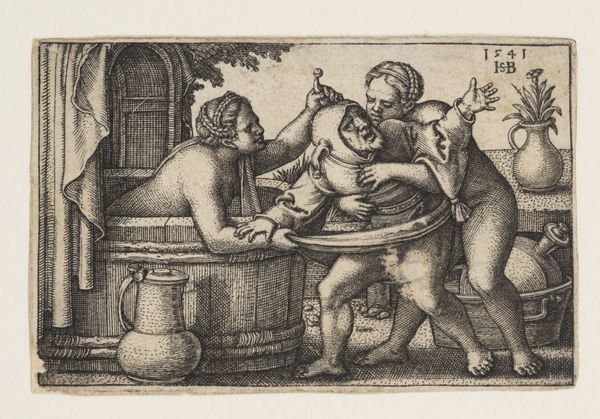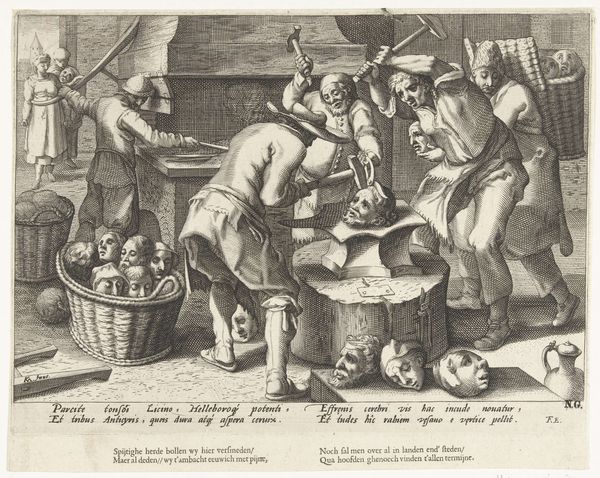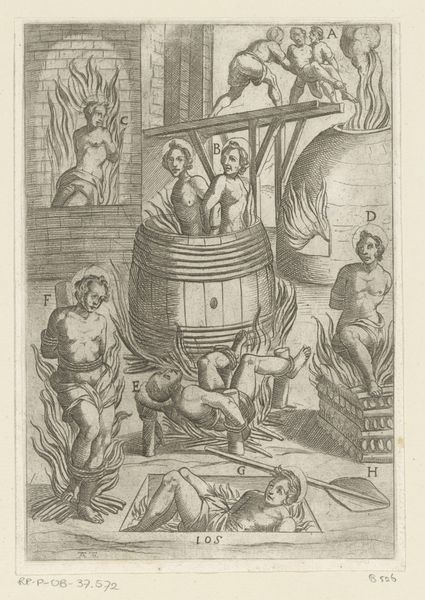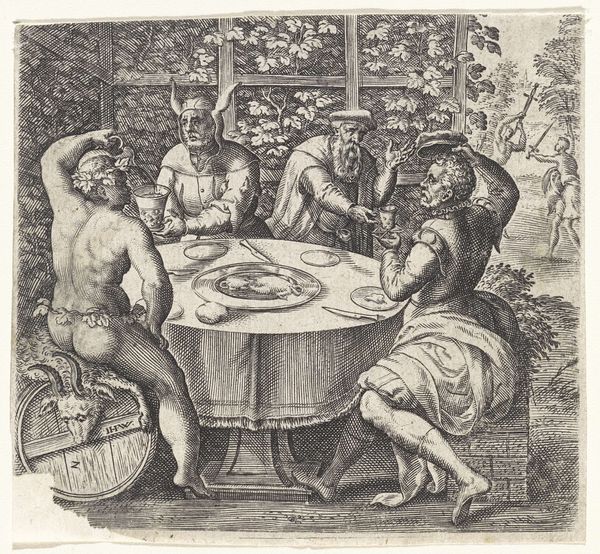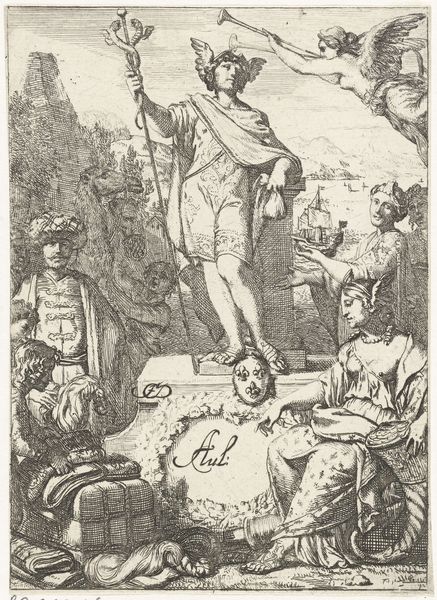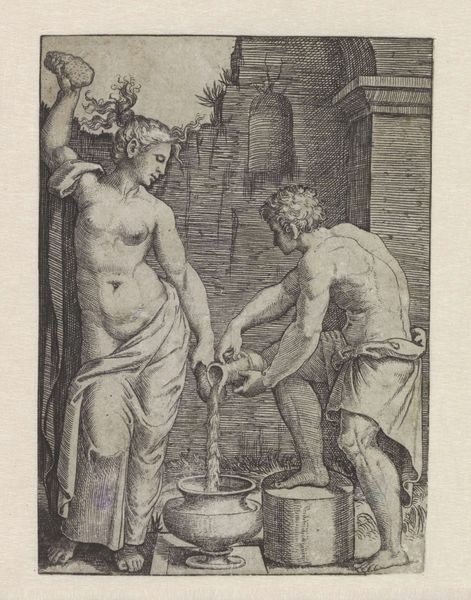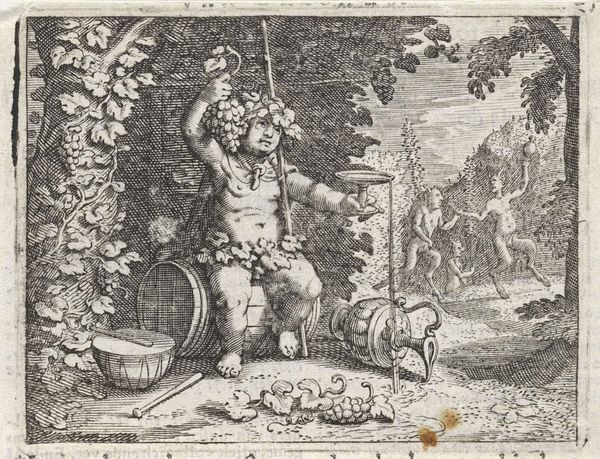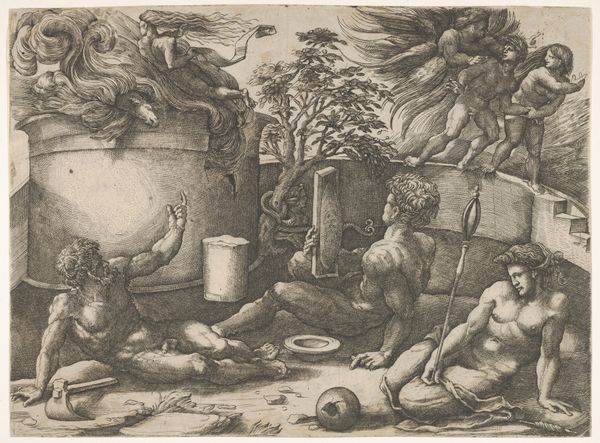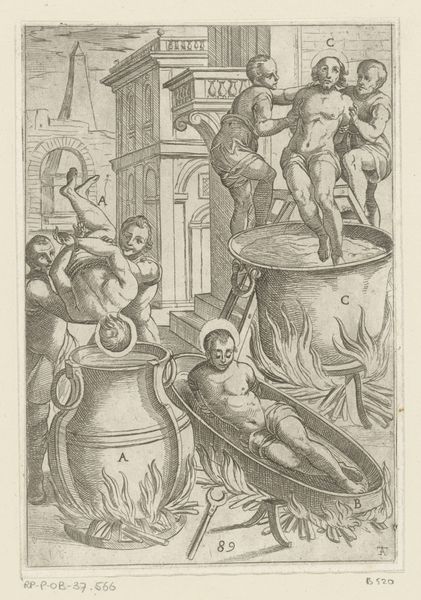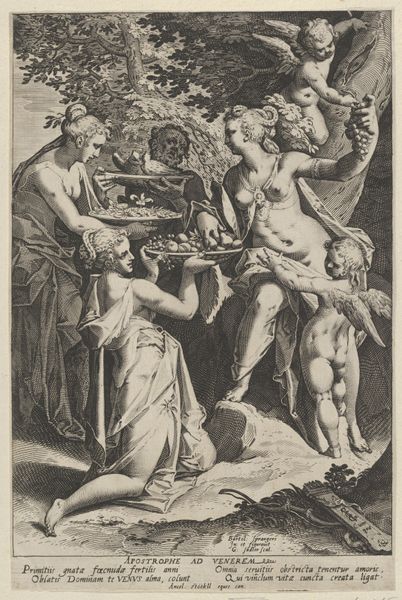
drawing, print, etching, engraving
#
drawing
#
allegory
#
baroque
# print
#
etching
#
figuration
#
france
#
men
#
pen work
#
genre-painting
#
history-painting
#
musical-instrument
#
nude
#
engraving
Dimensions: 7 1/16 x 4 13/16 in. (17.9 x 12.2 cm)
Copyright: Public Domain
Curator: Let's turn our attention to "Bon Temps" by Pierre Brebiette. Created sometime between 1610 and 1642, this etching and engraving resides here at The Metropolitan Museum of Art. What are your first thoughts? Editor: Well, I immediately notice the composition. It’s overflowing with figures and objects; a slightly chaotic celebration, rendered in intricate lines. There's a definite sense of revelry, but also, perhaps, of impending… excess? Curator: Excess is key here! Look at the density of the hatching and cross-hatching. The artist's labor in creating this print seems to mirror the abundance depicted. He’s working with etching and engraving tools, manipulating the metal plate to produce this sense of rich texture. And consider the implications of producing it as a print. The work is made to be reproduced and widely distributed, amplifying its commentary about 'good times' to a larger audience. Editor: Exactly. And it's a very loaded image. We see what appears to be a depiction of Bacchus, or perhaps Silenus, crowned with grapes, a vessel of wine at the ready. The figures surrounding him – women, putti playing musical instruments – create this aura of pleasure and indulgence. I’m interested in the lute, how the woman looks, the expression in her eyes while playing this instrument. What this allegory attempts to portray! Curator: Musical instruments tie directly into questions of labor and patronage. Instruments like the lute were highly prized objects, products of specialized craft. Their presence here suggests both aristocratic leisure and the consumption habits that support these skilled artisans. "Bon Temps" isn't just about 'good times'; it is also subtly showing the infrastructure of production. Editor: That’s interesting. I see the symbolic dimension as dominant here, with the lute embodying harmony, not merely an aesthetic item linked to class but as part of the complete representation of good times. Also, I can't overlook that this is a rather explicitly sensual scene – the nude figures, the overflowing wine, even the close arrangements, all hinting to ideas around beauty standards of its time. Curator: But think of the economics involved in sustaining such lavish imagery. The artist depended on buyers, who in turn were benefiting from social and economic structures of the period. How complicit, perhaps, were people like Brebiette in the conditions he depicted? Editor: That brings an unexpected, new point of view into my understanding. So the scene’s joviality perhaps veils a deeper inquiry into luxury's cost! Fascinating! Curator: Precisely. "Bon Temps," viewed materially, provides a lens through which we can examine systems of production and exchange. It is through the creation of these works that we have material culture but is not simply an allegorical representation! Editor: Well, thanks to you, this print provides even richer levels to experience how symbols can still talk to audiences throughout art’s fascinating continuum.
Comments
No comments
Be the first to comment and join the conversation on the ultimate creative platform.
